
Conservation of Nature and Wildlife
in the Ostfalen Technology Park
The extensive green areas of the Technology Park in Barleben are not only attractive recreational areas, they also serve to preserve biodiversity.
When planting the lawns with standard seed mixtures, a robust, but less diverse meadow flora has been created. As a result, the biodiversity of the meadow areas and, consequently, also e.g. of the insects is restricted.
In order to increase biodiversity, the Zweckverband Technologiepark Ostfalen, the district of Börde (nature conservation authority) and the NABU Barleben e.V. have agreed to implement a joint project to increase biodiversity on the grassland areas in the Ostfalen Technology Park.
An essential part of the project is the increase in the number of plants occurring in the area. The aim is that all native species, which could grow according to their natural location requirements (soil type, water availability, lighting conditions, temperature) at the different locations in the Technology Park, also occur in stable populations. For this purpose, various actions are implemented:
- a temporally and spatially differentiated maintenanceof the meadows means that from the beginning to the end of the growing season there are enough flowering plants as insect food and at the same time there are always short-grassed areas on which different bird species can look for their food.
- half of the approximately 50 hectares of green areas, including the wet meadows along the Kleine Sülze and the Telzgraben creeks, are expertly cared for by the NABU Barleben. This enhances the natural value of the area.
- Plant species that do not occur in the area so far are settled by targeted sowing, planting or transfer of mown biomass from natural meadows in the vicinity.
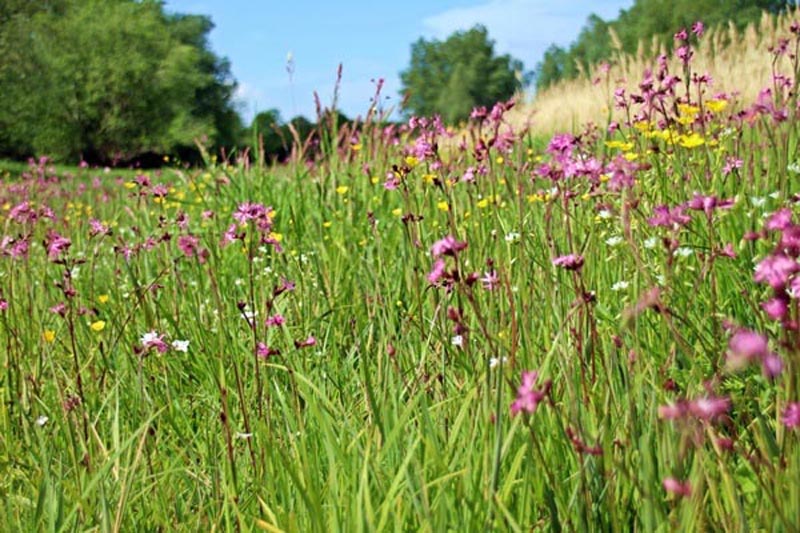
The transmission of mown biomass from a species-rich meadow on Hägebach creek near Samswegen has been practiced for several years. Some plant species, including Cuckoo Flower, Ragged Robin and Creeping Buttercup, were already able to settle in the technology park in this way. Already since the following year, the white, pink and yellow-colored flowers determine the blooming on the surfaces in the margins of the Kleine Sülze creek.
Colorful meadows not only delight park visitors, they also host a variety of insects and other species. Depending on the composition of the plant species and site conditions of the green areas, there are diverse communities with different demands on their habitat. To each plant species around 10 to 30 animal species are tied. The project partners assume that the transmission of mown biomass can also be used to transfer species of small creatures from the area of the Sägebach creek to the Ostfalen meadows. In order to be able to assess the success of previous conservation and development activities for wildlife protection, a systematic stocktaking of the species in the Technology Park is being conducted.
Particular attention is paid to the diurnal butterflies and dragonflies, as these groups of species clearly reflect the ecological value of the meadows and water courses within the park. In the long term, Barleben's experience will also serve to develop sustainable concepts in order to unite the different demands for use of communal green areas with the desire for more nature experiences in recreational areas while at the same time making an important contribution to wildlife protection. We will report on the results of the current data collection on an ongoing basis.
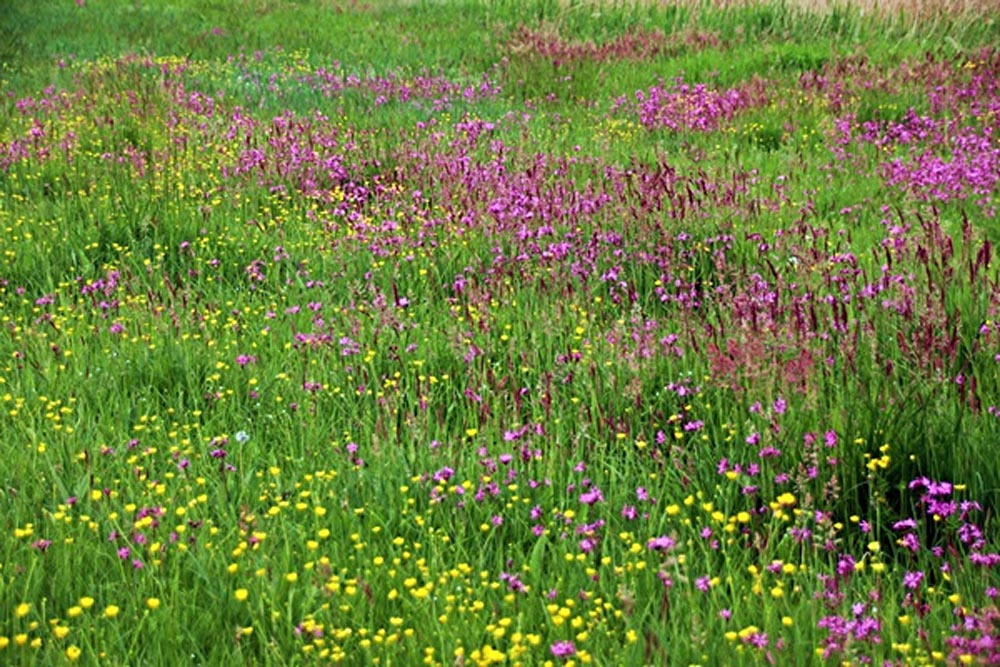 The colorful flowering wetland sections south of the Kleine Sülze are the result of a targeted biomass transfer from the natural monument "Hägebachaue-Ostteil". The blooming has since been determined by the Ragged Robin (Lychnis flos-cuculi) and the Common Buttercup (Ranunculus acris). Both species serve various butterfly species and many other insects as source of nectar.
The colorful flowering wetland sections south of the Kleine Sülze are the result of a targeted biomass transfer from the natural monument "Hägebachaue-Ostteil". The blooming has since been determined by the Ragged Robin (Lychnis flos-cuculi) and the Common Buttercup (Ranunculus acris). Both species serve various butterfly species and many other insects as source of nectar.
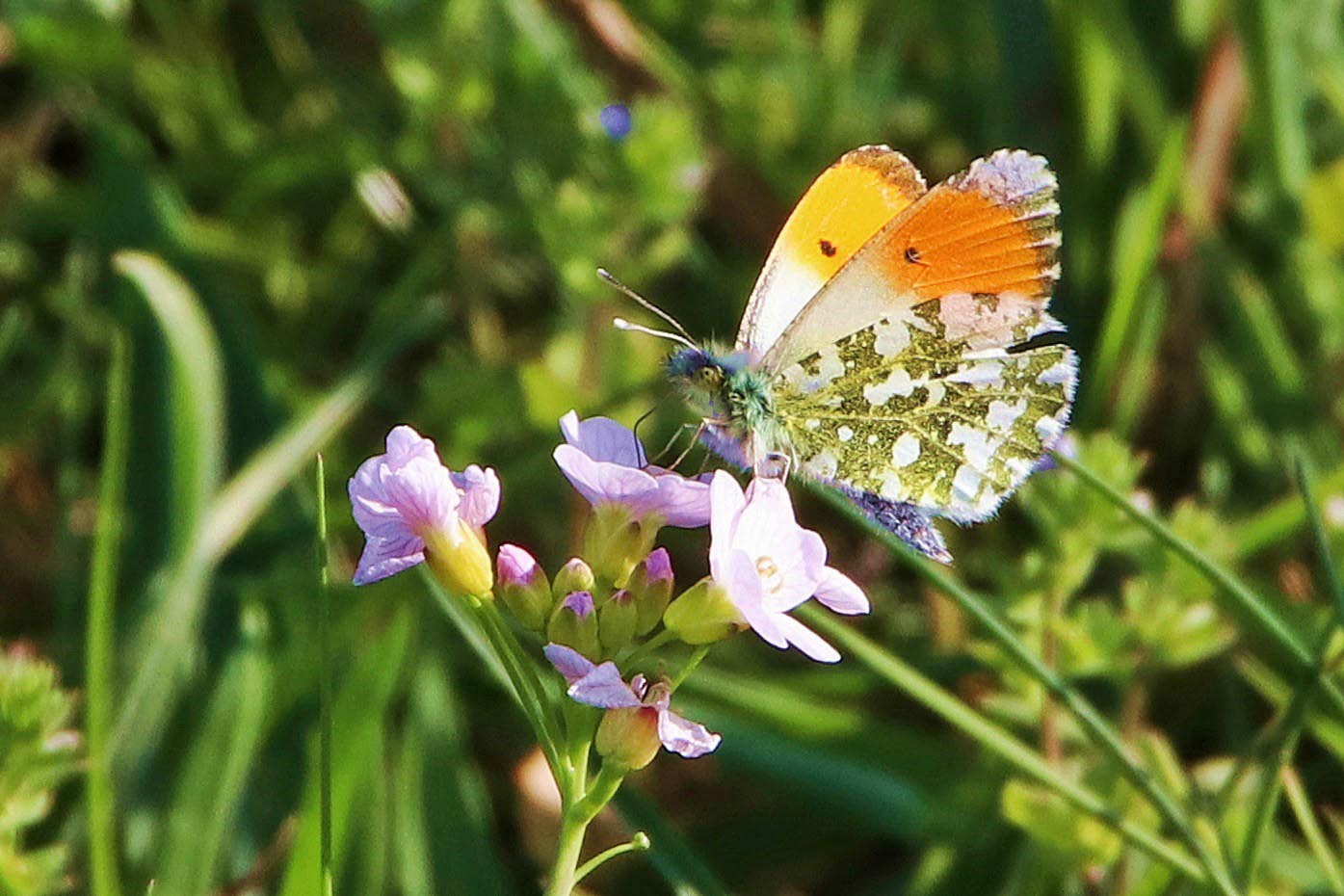 The Orange-Tip Butterfly (Anthocharis cardamines) flies early in the year during flowering of garlic mustard (Alliaria petiolata) and cuckoo flower (Cardamine pratensis). Both plant species serve the butterflies as source of nectar and at the same time as food plants for the caterpillars. The wingtips of the male Orange-Tip Butterfly are strangely orange colored.
The Orange-Tip Butterfly (Anthocharis cardamines) flies early in the year during flowering of garlic mustard (Alliaria petiolata) and cuckoo flower (Cardamine pratensis). Both plant species serve the butterflies as source of nectar and at the same time as food plants for the caterpillars. The wingtips of the male Orange-Tip Butterfly are strangely orange colored.
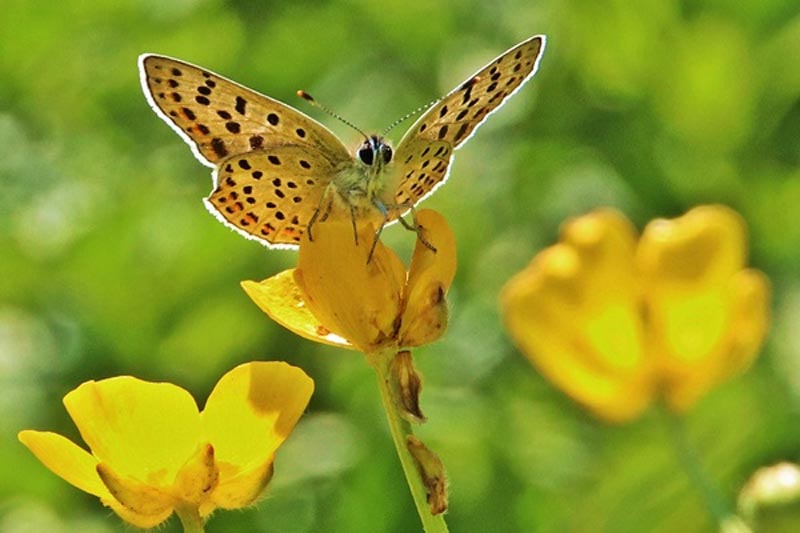
The Sooty Copper (Lycaena tityrus) flies in the Technology Park on wet and dry meadows. Its well-camouflaged green caterpillars feed exclusively on sorrel species (Rumex acetosella, R.acetosa).
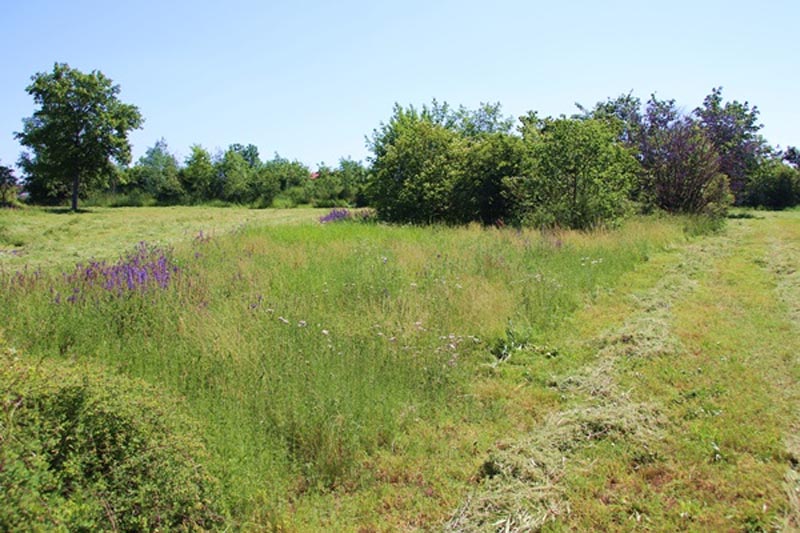
In the mowing of the green areas by the NABU deliberately certain areas are left out to obtain sufficient retreats for insects. Certain forms of development (eggs, larvae, caterpillars, pupae) can survive in these "protective strips". Remaining wild herbs and perennials, such as the purple flowering meadow clary (Salvia pratensis), are valuable nectar plants on the land during the transitional period.
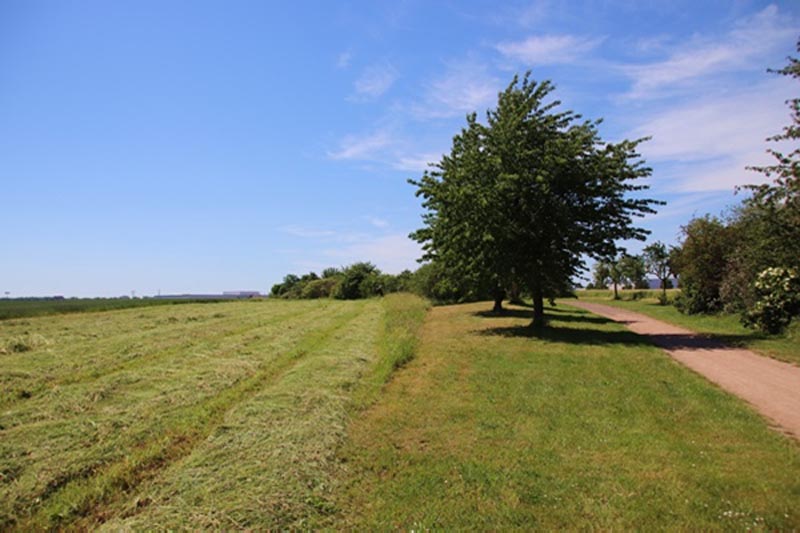
In the Technology Park, various forms of grassland management are practiced. While the margins of the paths are kept permanently short, a large part of the adjacent meadows is mowed only twice a year. The areas are accordingly colorfully flowering and structurally rich. They represent valuable habitats for various animal species. For these species, high-growth margins are left behind with each mowing.
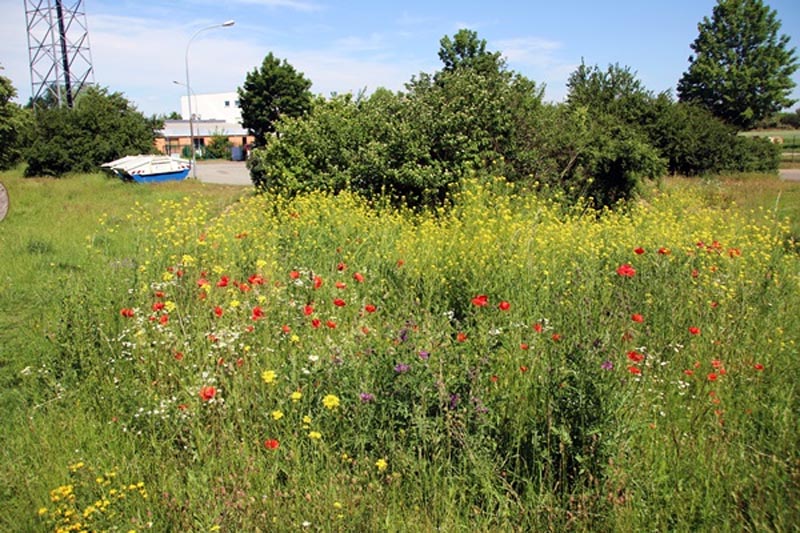
Colorful flowering strips of perennials not only have a high ecological value, they also enrich the appearance of the parks and thus increase the recreational value for the visitors.
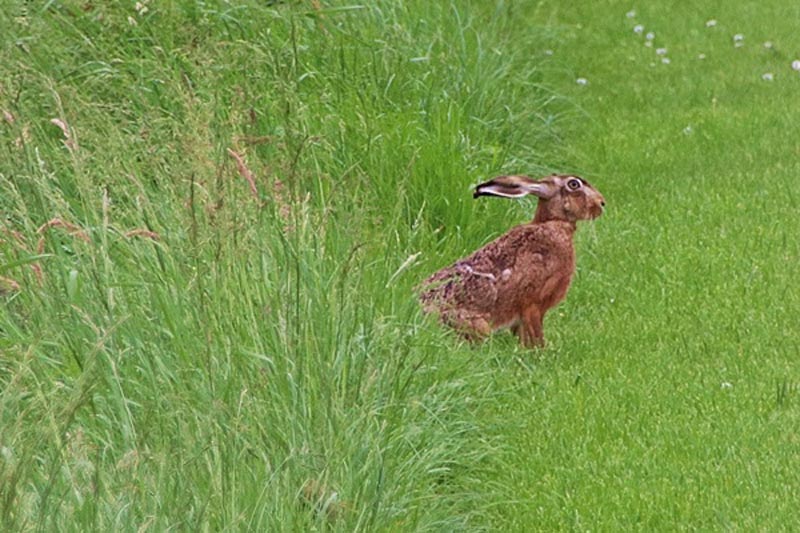
The structure-rich meadows in the technology park are also valuable habitats for the Brown Hare (Lepus europaeus), which benefits here from the abundant food supply and the protective cover. In the Red List of Saxony-Anhalt, he is classified as "highly endangered" due to declining occurrences.
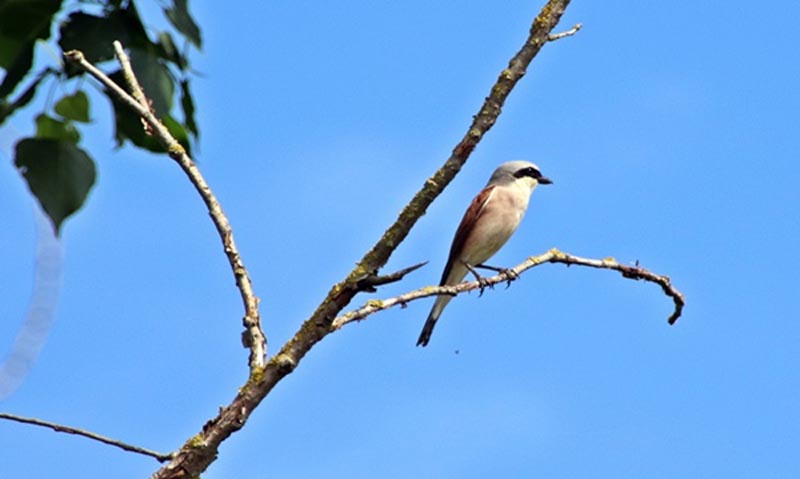
The Red-Backed Shrike (Lanius collurio) inhabits structurally rich landscapes with sufficiently high insect density. He often spits out his prey in the sense of "stockpiling" on thorny branches and twigs. This behavior is particularly beneficial in times of bad weather, where most insects are hiding. In Saxony-Anhalt, the occurrence of the Red-Backed Shrike is considered to be sharply decreasing, which is due to the loss of suitable habitats and the currently much-discussed insect extinction.
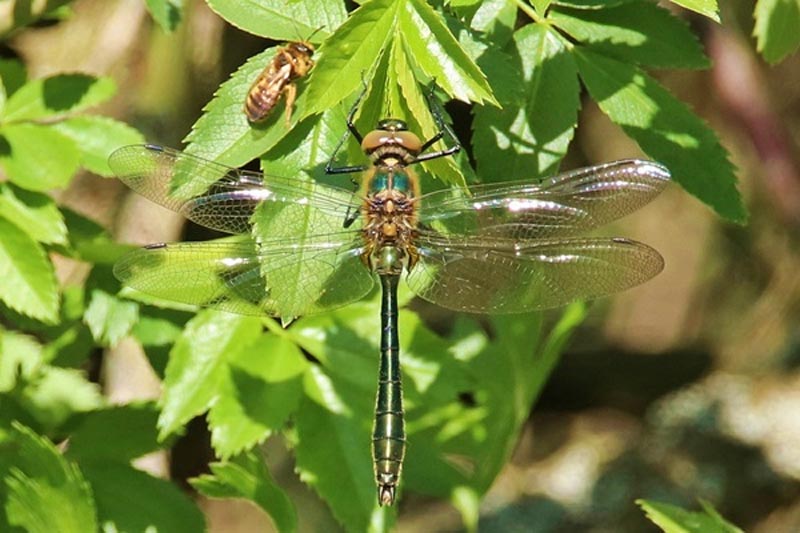
A newly hatched Dawny Emerald (Cordulia aenea) at the edge of the quarry lake. The species flies on stagnant water with large open water areas. Their larvae depend on a well-developed underwater vegetation during their development over several years.
Text und pictures: Susen Schiedewitz